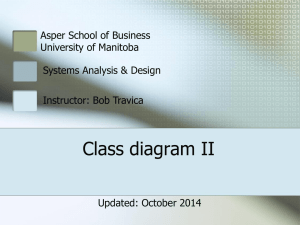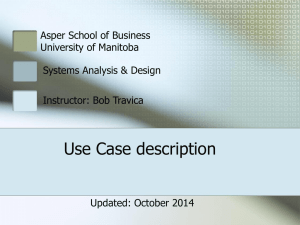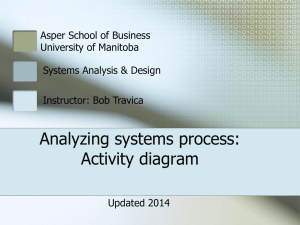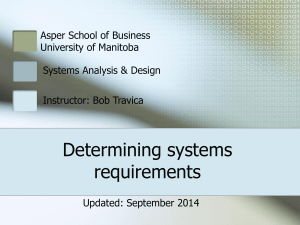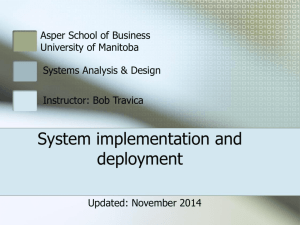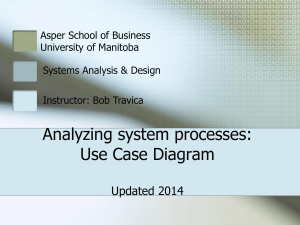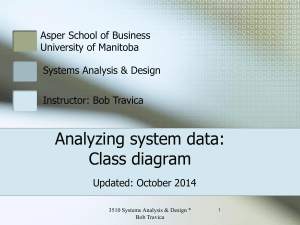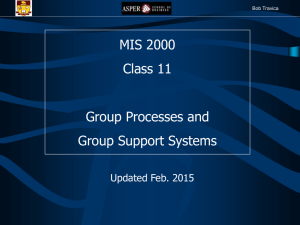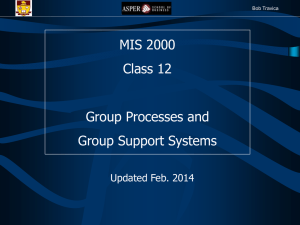business case for a system
advertisement
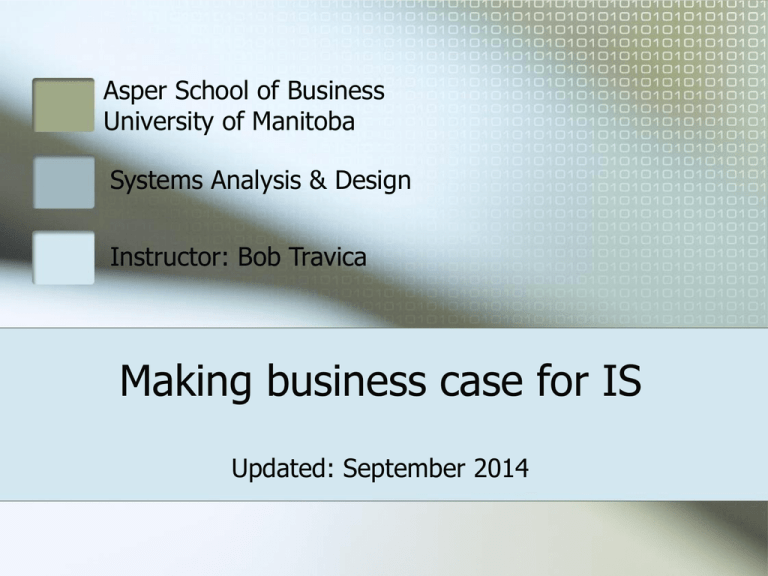
Asper School of Business University of Manitoba Systems Analysis & Design Instructor: Bob Travica Making business case for IS Updated: September 2014 Outline Business and systems planning Business Case Feasibility kinds Risk management 3510 Systems Analysis & Design * Bob Travica 2 Business and systems planning Business comes first, then systems Business strategy determines systems strategy Case: Rocky Mountain Outfitters (RMO) in the book 3510 Systems Analysis & Design * Bob Travica 3 RMO Case Business: Manufacture and distribute sports clothing. Strategic goal: Support growth through business-to-consumer e-commerce. Systems strategy: Develop new customer support system (CSS) that fits business goals. In 2010s, social media are part of the e-commerce context. 3510 Systems Analysis & Design * Bob Travica 4 RMO Case (cont.) What should system analyst’s do first: Understand customer-related tasks (e.g., product search, ordering) Investigate current IS Define objectives of new CSS Create planning documentation As any system, CSS is developed via a system development project project organization & team work matter 3510 Systems Analysis & Design * Bob Travica 5 Business case (See pp. 107-113) 1. 2. 3. 4. 5. 6. Business Case = Assessment of a system’s feasibility and risks. Feasibility: Economic (benefits vs. costs of IS? Next slides…) Technological (expertise to develop & use IS? IT maturity?*) IS Development Project aspects (size, complexity?) Organizational factors (IS culture & politics?)** Scheduling (development timing vs. a company’s time constraints?) Resource (sufficient staff available?) 3510 Systems Analysis & Design * Bob Travica 6 Economic feasibility: System benefits Online store example Quality eliminates re-working Reduced execution time 3510 Systems Analysis & Design * Bob Travica 7 System costs One-time tangible costs Online store example Recurring tangible costs Online store example 3510 Systems Analysis & Design * Bob Travica 8 Matching costs with benefits Use some financial model (NPV, Break-Even analysis, Return on Investment…) Intangible costs & benefits – can be part of feasibility case common way: listing & trying to project conversion of intangible benefits into tangibles better way: formal methods like Balanced Scorecard 3510 Systems Analysis & Design * Bob Travica 9 Risk management Risk = undesirable events affecting feasibility aspects during IS development project in production stage of an IS can be calculated (later slide) 3510 Systems Analysis & Design * Bob Travica 10 Risk analysis Project factors Organizational factors Technological Factors: - Developers - Users 3510 Systems Analysis & Design * Bob Travica 11 Risk analysis (cont.) Risk level=Risk Factor Weight (Impact)*Occurrence Likelihood (p) Example*; scales of Risk and Risk Factor: 0 (low)-10 (high), probability scale: 0-1: Key developer unavailability: weight=7, p=0.6; Risk=7*0.6=0.42 Legal problems, weight=7, p=0.3; Risk=7*0.3=0.21 Key developer unavailability risk > Legal risk To run the formula on risk frameworks, some re-wording may be needed (check table on slide 11) See Note bellow 3510 Systems Analysis & Design * Bob Travica 12
